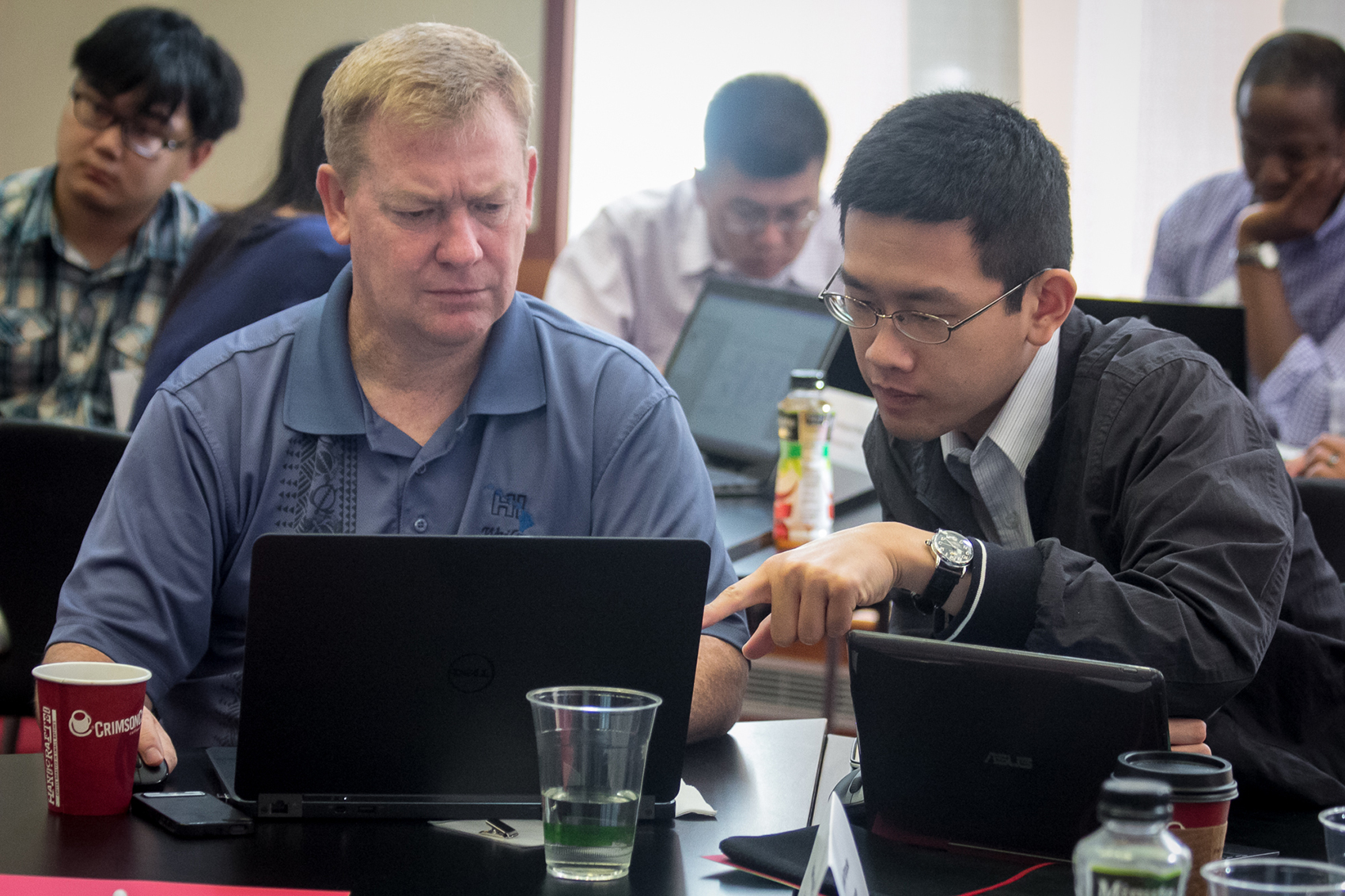
John Bair (left), a mentor of the engineering team, and Bert Liu, student lab member of the engineering team, working at the I-Corps@Ohio Program. Photo courtesy of I-Corps@Ohio.
Two Ohio State research teams have successfully completed the seven-week I-Corps@Ohio program, making them just one step closer to commercializing their new technology that was developed on campus.
The program is designed to help the teams figure out if their research can be commercialized and useful outside of the lab, said Michael Camp, the program coordinator for I-Corps.
“Any program is better than no program,” Camp said. “I think the I-Corps program is uniquely special in that it forces the teams to focus on the critical questions by getting them out of the building, talking directly to customers.”
This is a statewide, competitive program to help faculty and graduate students find validation in their research, Camp said. The idea of the program is to get researchers to talk with customers and manufacturers before they write up a business plan or try to start a business, in order to be sure that their product will be successful.
“They have to actually go out and contact potential customers,” Camp said. “They do somewhere near 100 interviews in five weeks.”
Glenn Daehn, a Fontana Professor of materials science and engineering, and Anupam Vivek, senior research associate, led one of the teams that completed the program.
Their research team developed a high-impact welding technique using high-strength metals that will be used in lightweight automobiles, Vivek said.
Vivek said the I-Corps program helped them direct their research in a more confident and relevant manner.
“This program was transformational for us,” Vivek said. “We talk to people that are day in and day out working in the auto industry that can tell us what the real problems are and the process for implementing a new technology, how difficult it can be.”
Vivek said they focus a lot on the product market and what the customer wants.
“If there’s no product market fit, then there’s no point in going any further into the research,” he said.
The other team from OSU that completed the program is led by Renukaradhya Gourapura, an associate professor of veterinary preventive medicine in the Food Animal Health Research Program at the Ohio Agricultural Research and Development Center in Wooster.
Gourapura developed a swine influenza vaccine for pigs that could help reduce the $3–10 in losses absorbed by pork producers per pig every year.
Gourapura said his research team went to the I-Corps program to find out its customers’ needs.
“I-Corps gave us the opportunity to interact with the people who are actually using these kinds of vaccines in the field and get the firsthand information about the current situation of the swine flu vaccine,” Gourapura said.
The program is funded by the Ohio Department of Higher Education. Currently six schools of higher education have implemented I-Corps, Camp said.
The program accepted only eight teams this season, as it is still getting used to setting it up and seeing how it works, though it hopes to eventually accept 20 teams per season, Camp said.
“We got proposals from schools like Youngstown State, Wright State, Kent State and Case Western,” Camp said. “There were about 11 schools this time around who submitted proposals.”
Camp said when selecting which teams to accept, they look for team dynamic, passion for the program and whether the student has the energy and determination to use the program well.
“Both the engineering and food-animal team had strong teams all the way around,” Camp said. “They had good mentors, they were very committed and the student entrepreneur leads were very strong.”
Camp said the primary purpose of I-Corps is to start companies and see the technology being used commercially.
“We want to see more of these technologies inside universities get out into the commercial market and deliver the products and services that benefit society,” Camp said.


